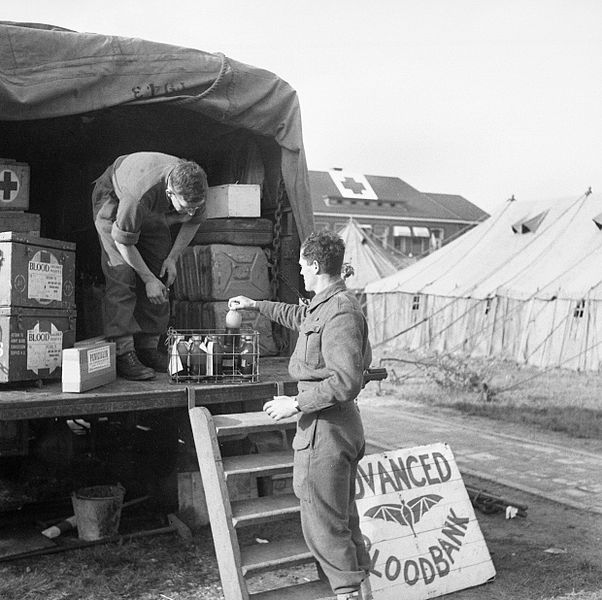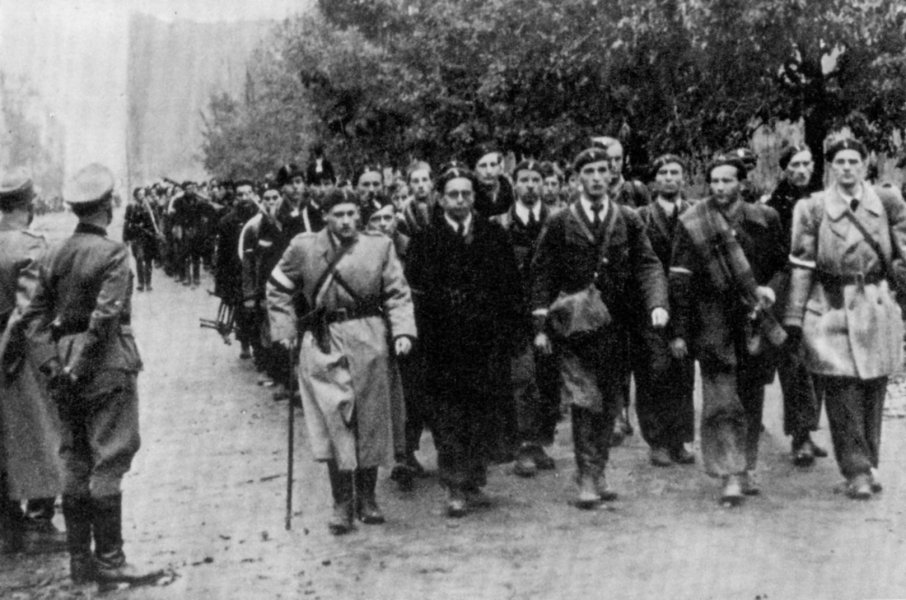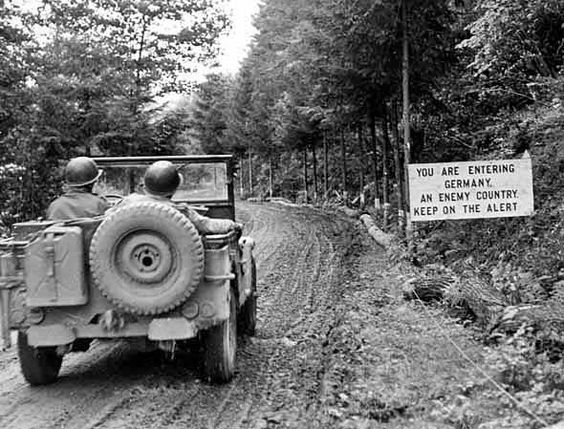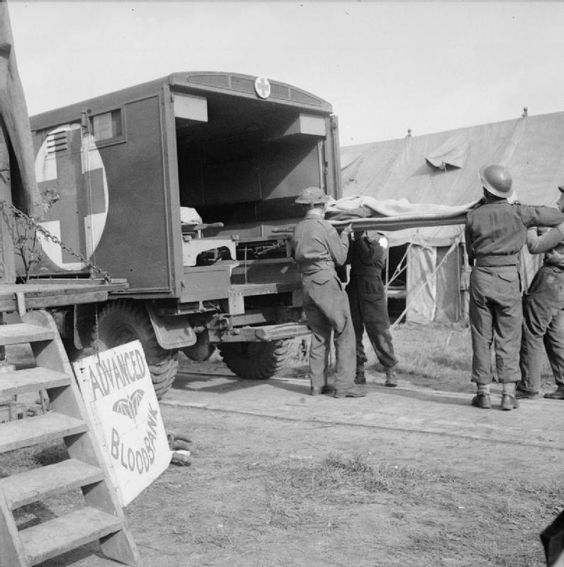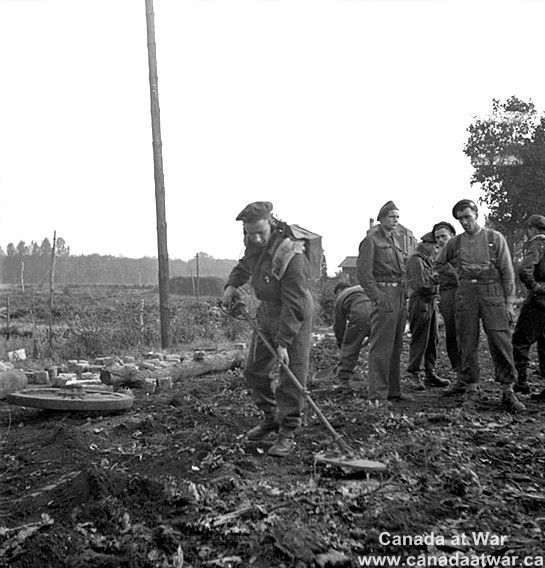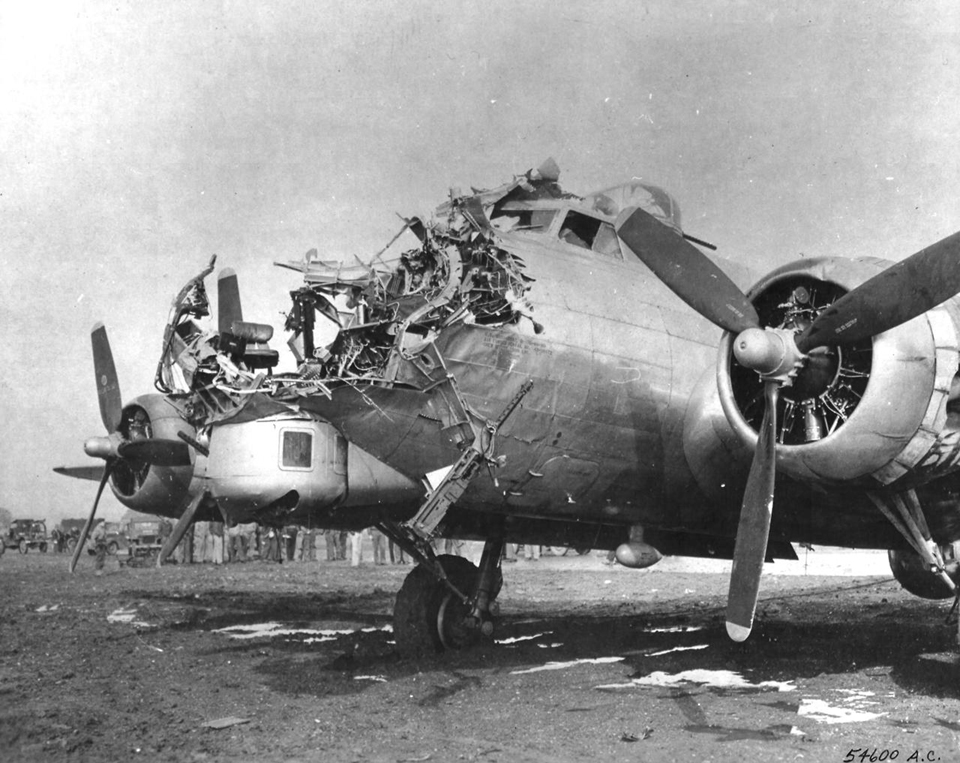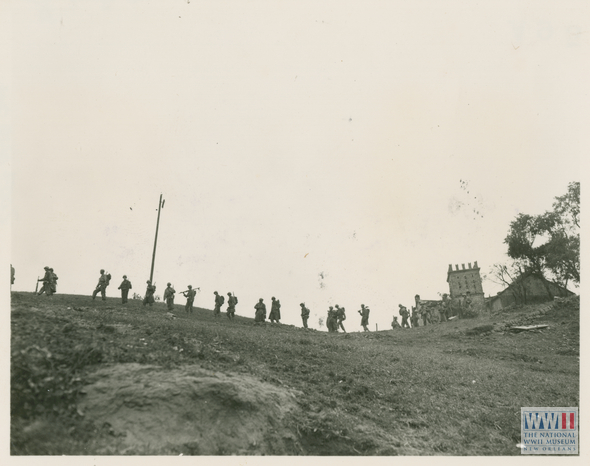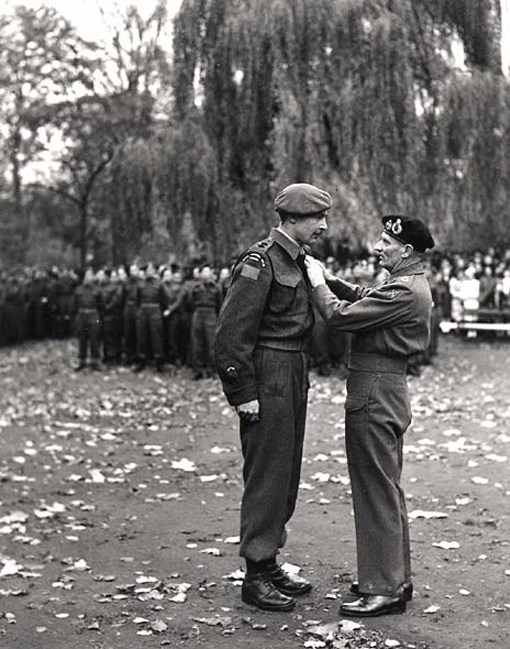Air Operations, Carolines
- 11th Heavy Bomb Group B-24s attack the Truk Atoll.
- VMF-113 F4U fighter-bombers establish a new long-distance endurance record for their type [see April 22, 1944] when they mount an attack against Ponape Island from their base at the Engebi airfield on Eniwetok. The round trip is 750 miles. Such attacks soon become commonplace.
Air Operations, CBI
BURMA- 8 10th Air Force B-25s attack bridges at Namhkai.
- 11 10th Air Force P-47s attack Mawlu and locomotives and targets of opportunity around Naba.
- 12 341st Medium Bomb Group B-25s and 22 14th Air Force fighter-bombers attack Koyiu, Samshui, and Takhing. 8 B-25s attack targets of opportunity in the Canton and Wuchou areas.
- 3 B-25s attack stores at Mangshih.
- More than 50 14th Air Force fighter-bombers attack troops and communications targets across large areas of southern China.
- 118th Tactical Reconnaissance Squadron P-51s down a Ki-43 'Oscar' fighter and 3 Ki-44 'Tojo' fighters over Sanshui during the afternoon.
Air Operations, East Indies
- FEAF B-24s attack airfields in the Kendari area on Celebes.
- B-25s and P-38s attack Amboina town, the Kairatoe airfield on Ceram, and shipping and coastal targets of opportunity around Amboina and Ceram.
Air Operations, Europe
RAF BOMBER COMMANDDaylight Ops:
- 227 Lancasters and 1 Mosquito attempt to bomb Wilhelmshaven throught thick cloud. The marking and bombing are all based on H2S and the results appear to be scattered. 18 Lancasters do not join the main effort, but bomb a group of ships seen through a break in the clouds. A report from the ground only states that 12 people are killed.
- 1 Lancaster is lost.
- 5 aircraft are on Resistance operations and there are 5 RCM sorties.
- There are no losses.
- 531 Lancasters and 21 Mosquitos of Nos. 1, 3 and 8 Groups make the first major RAF raid on Saarbrücken since September 1942. The raid is made at the request of the American 3rd Army which is advancing in this direction. The object of the raid is to cut the railways and block supply routes generally through the town. The bombing is accurate and severe damage is caused in the main town area north of the Saar River, the area through which the main railway lines run. Damage is particularly heavy in the Altstadt and Malstatt districts.
- 3 Lancasters are lost.
- 20 Mosquitos are sent to Berlin and 26 more to 5 other German targets, 10 Halifaxes lay mines off Heligoland, 9 Mosquitos of No. 8 Group lay mines in the Kiel Canal, and there are 47 Mosquito patrols and 36 RCM sorties.
- There are no losses.
GERMANY:
- The entire 1st Bomb Division diverts to targets of opportunity: 248 B-17s attack Cologne; 52 B-17s attack Brechten, Koblenz, and Dortmund.
- 175 2nd Bomb Division B-24s attack the Lippstadt Airdrome.
- 107 2nd Bomb Division B-24s attack a marshalling yard at Rheine.
- 28 2nd Bomb Division B-24s attack the Paderborn Airdrome.
- 10 2nd Bomb Division B-24s attack targets of opportunity.
- 235 3rd Bomb Division B-17s attack the Munster/Loddenheide Airdrome.
- 68 3rd Bomb Division B-17ss attack the Munster/Handorf Airdrome.
- 12 3rd Bomb Division B-17s attack tagets of opportunity.
- 9 B-17s and 5 of 675 VIII Fighter Command escort fighters are lost
GERMANY:
- 9th Air Force fighter-bombers attack defensive emplacements along the West Wall and directly support the US XV Corps.
USAAF
ITALY:
- The 12th and 15th Air Forces are grounded by bad weather.
- More than 339 9th Bomb Division B-26s and A-20s dispatched against targets in the Netherlands are recalled when they encounter bad weather.
Air Operations, Japan
2 28th Composite Bomb Group B-24s attack Kashiwabara and Kurabu Cape.
[Air Operations, New Guinea
- V Bomber Command B-25s and A-20s, and V Fighter Command fighter-bombers attack airfields at Babo, Efman, and Samate, and Doom Island, Simora Point, and Urarom.
- A-20s attack bivouacs and supply caches around Sarmi.
Atlantic
During the night 36 Linsen boats are lost during an attempted raid off the Scheldt River.
[CBI
President Roosevelt replies to Chiang Kai-shek and offers a compromise by proposing to appoint a new advisor while leaving Gen Stilwell in charge of combat operations in Burma and the direction of the Hump airlift.
[Eastern Front
In the northern sector the armies of the 1st Baltic Front starting from the area of Siualiai, in Lithuania, open a powerful offensive toward the Baltic and East Prussia, with the aim of bottling up the German Army Group North. It is left to the 2nd and 3rd Fronts to continue the advance toward Riga.
Soviet forces land on Saaremaa Island in the Baltic. The German forces on the island make a fighting withdrawal toward the Syrve peninsula.
Almost at the other end of this enormous front, Malinovsky's 2nd Ukraine Front, starting from the area or Arad, in Rumania, begins the offensive against southeast Hungary, aiming for Szeged and Budapest.
NORTHERN SECTORElements of the 8th Army land no Yezel Island but encounter strong German resistance.
Using thick fog as cover, the 1st Baltic Front opens its offensive toward Memel. Over the preceding couple of weeks the front has redeployed the 51st and 5th Guards Tank Armies around Siauliai. Between Dobele and Rasianiai the 1st Baltic Front has the 3rd Shock, 42nd, 4th Shock, 6th Guards, 51st, 5th Guards Tank, 43rd and 2nd Guards Armies. Supporting the southern wing, based just south of Rasianiai, is the 39th Army of the 3rd Belorussian Front. To the north, around Riga, the 1st Baltic has the 43rd and 4th Shock Armies, while the 2nd Baltic has the 22nd and 10th Guards Armies east of Riga and the 3rd Baltic Front, northeast of Riga, has the 54th 61st, 1st Shock, 67th and 2nd Shock Armies.
Concentrated arty fire hits the 3rd Panzer Army between Siauliai and Rasianiai, inflicting heavy casualties. The 43rd and 6th Guards Armies quickly cross the Venta River and advance 10 miles. The 2nd Guards Army forces the Dubissa River despite ferocious German resistance.
Aware of Soviet intentions, Army Group North accelerates the withdrawal of the 18th Army from Latvia, the army abandoning its positions around Sigulda.
[Germany, Home Front
16-year-old youths are to be conscripted for military service. All hospitals are placed under military control. Nazi party and Hitler Youth activities are 'cut to the bone'.
[Greece
British forces land on the Greek mainland and enter Patras.
[Italy
West of the American IV Corps attacks are resumed in the direction of La Spezia, while other units continue to advance north, hill after hill.
[Pacific
The US submarine Cod (SS-224) sinks the Japanese merchant cargo ship Tatsuhiro Maru (6886t) in the South China Sea west of Mindoro.
[Palau Islands
On Peleliu operations are temporarily slowed down by the rain, and by relieving of the American units in the Mount Umurbrogol sector.
[United States, Planning
Adm Nimitz notifies his subordinate service commanders that Operation CAUSEWAY (the invasion of Formosa) is deferred and that planning for the capture of Iwo Jima (Operation DETACHMENT and capture of islands in the Ryukyus beginning on March 1. The islands are within bombing range of the home islands of Japan and will control the air and sea links to Japan. The islands also afford secure anchorages fo the US fleet.
Western Front
Units of the US 2nd Army advance in the direction of Geilenkirchen, and toward the south reach the road between that town and Aachen. In the American XII Corps sector, bad weather holds up the attack toward Schmidt, an important target on the Ruhr dykes south of Aachen. Allied forces cross the Belgian-Dutch border north of Antwerp.
[Images from October 5, 1944
|
|
|
|
|
|
|
|
